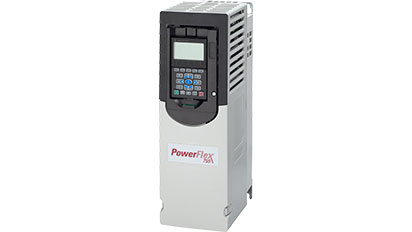The simplest answer may be that there seems to be no one simple and straightforward answer to the question. It helps to clarify what exactly these designations mean. For starters, there are several different ways that VFDs can be classified.
One way VFDs are classified is by the electronic topology of their inverter stages. So for example, the voltage source inverter (VSI) drive is one of the most common types, but there are also current source inverter (CSI) drives as well as other topologies.

When specifying VFDs, its common to refer to them in terms of power ratings, or voltage and current ratings, or even torque ratings. The most common ways involve voltage (i.e. the supply voltage to the VFD) and the horsepower rating.
A general rule of thumb is that the VFD rating is linked to the rating of the motor. For instance, the International Energy Agency classifies motors as small, medium, and large according to the following criteria:
Small: 10 to 750 W (0.013 hp to 1 hp)
Medium: 0.75 kW – 375 kW (1 hp to 500 hp)
Large: 375 kW – 10000 kW (500 hp to 13,400 hp)
However, some manufacturers categorize drives that power motors from 3 to 5 hp as micro drives. Drive manufacturers will typically list their offerings by referring to the horsepower of the motors they control. So for instance, drives will be referred to as being available from ½ to 1,000 hp but they’ll also be referred to by their voltage rating, from 110 to 480 V for instance. Ultimately, correctly sizing a VFD is based on the motor current and voltage.
The bottom line may simply be this; don’t be too concerned with the designators micro/small/medium/large. For specifying a VFD, focus instead on the voltage and current ratings of the VFD, matching them with the motor to be controlled.







Leave a Reply
You must be logged in to post a comment.